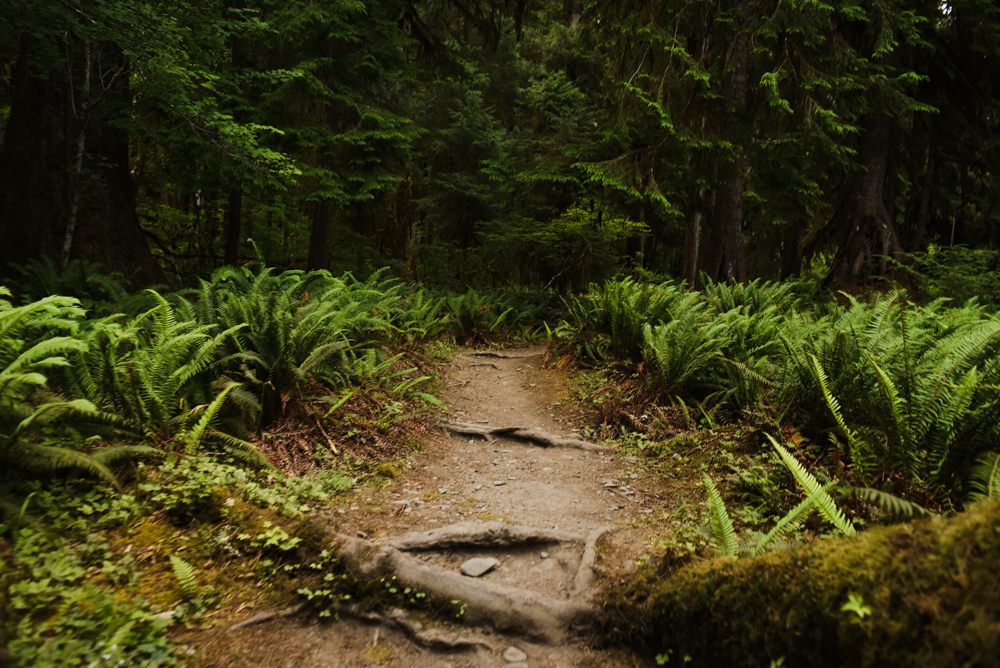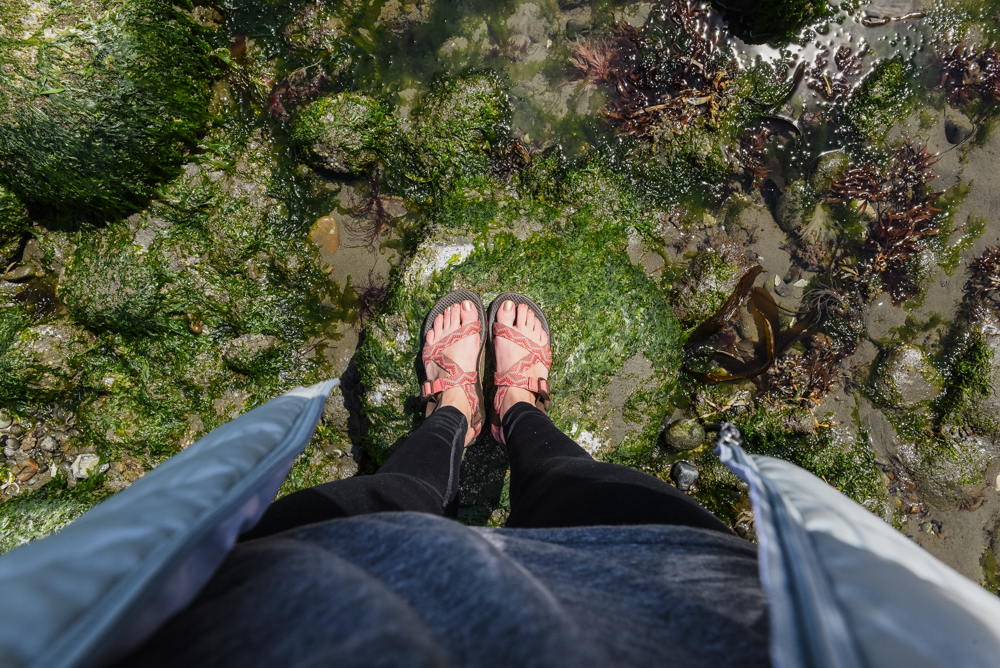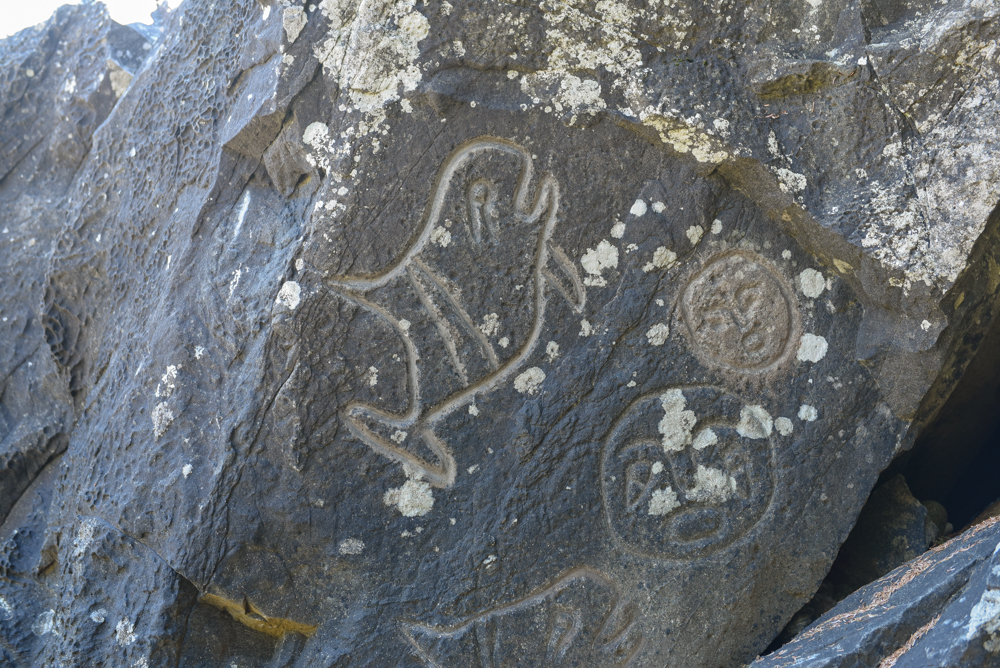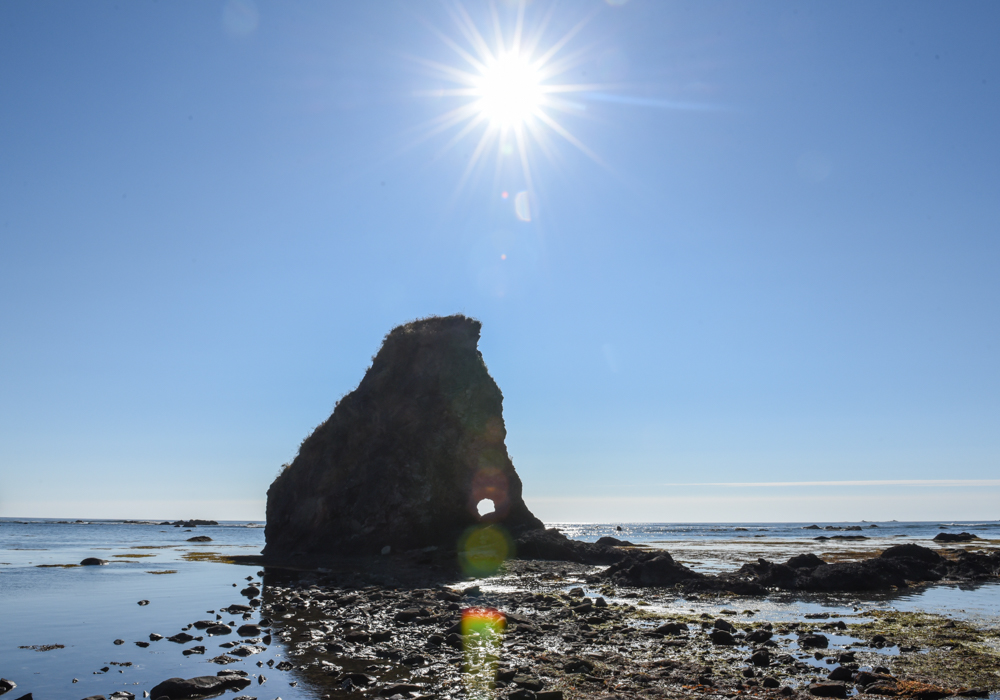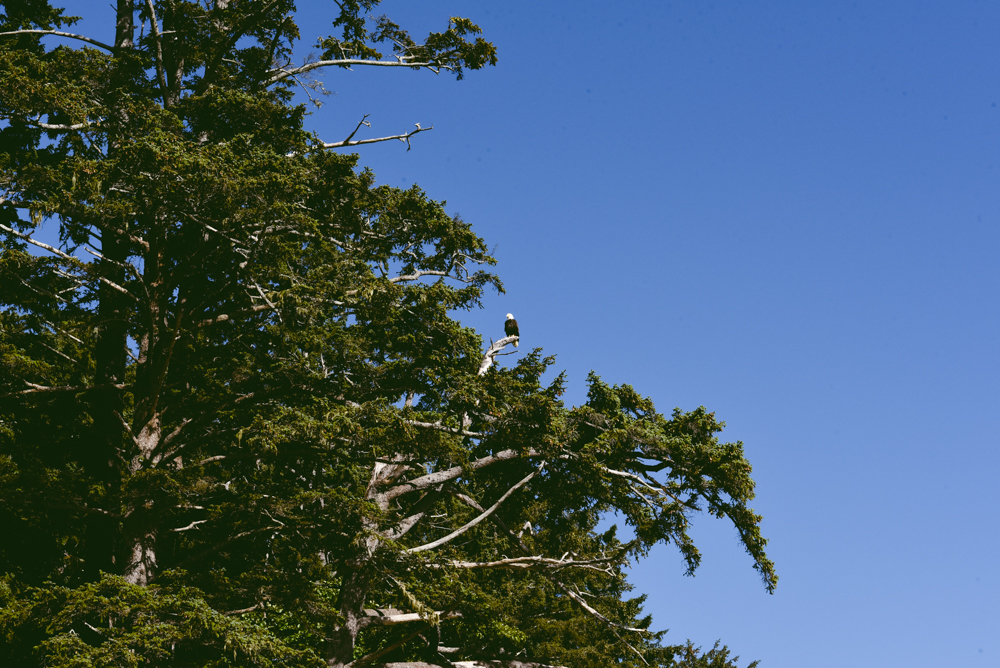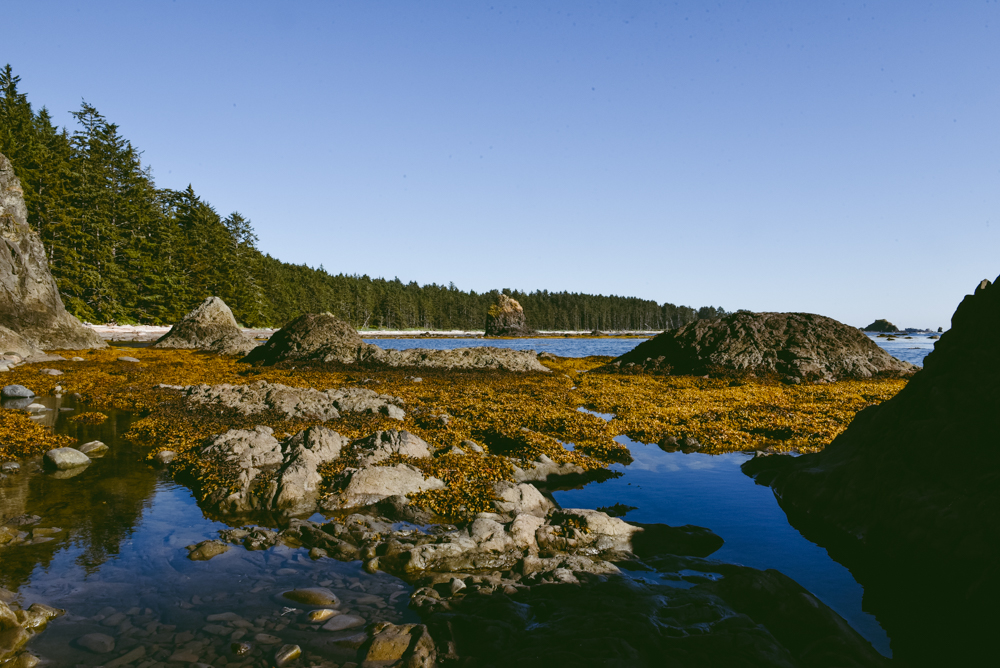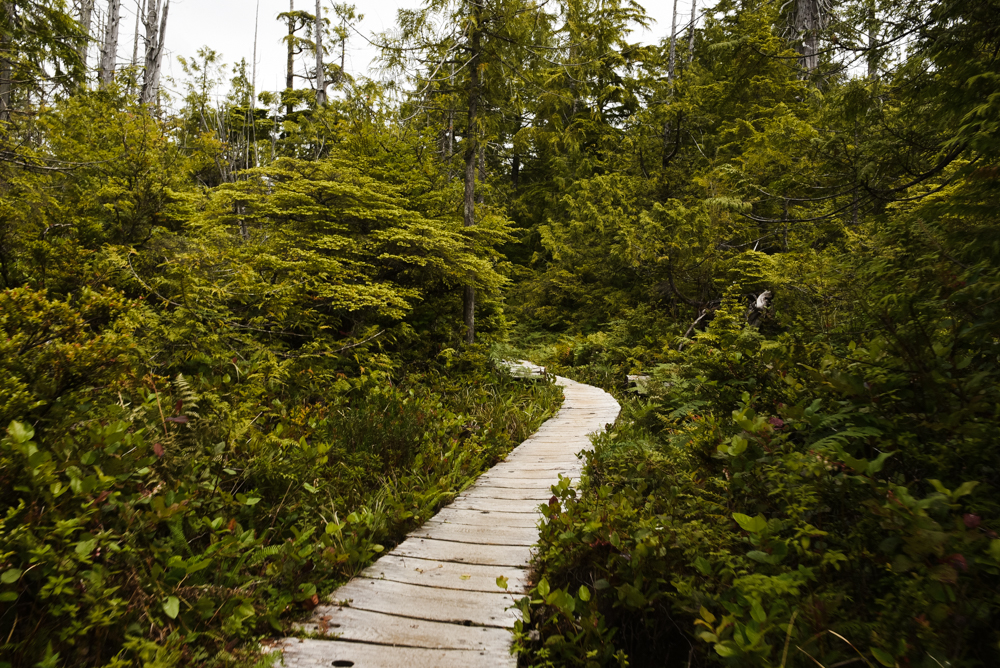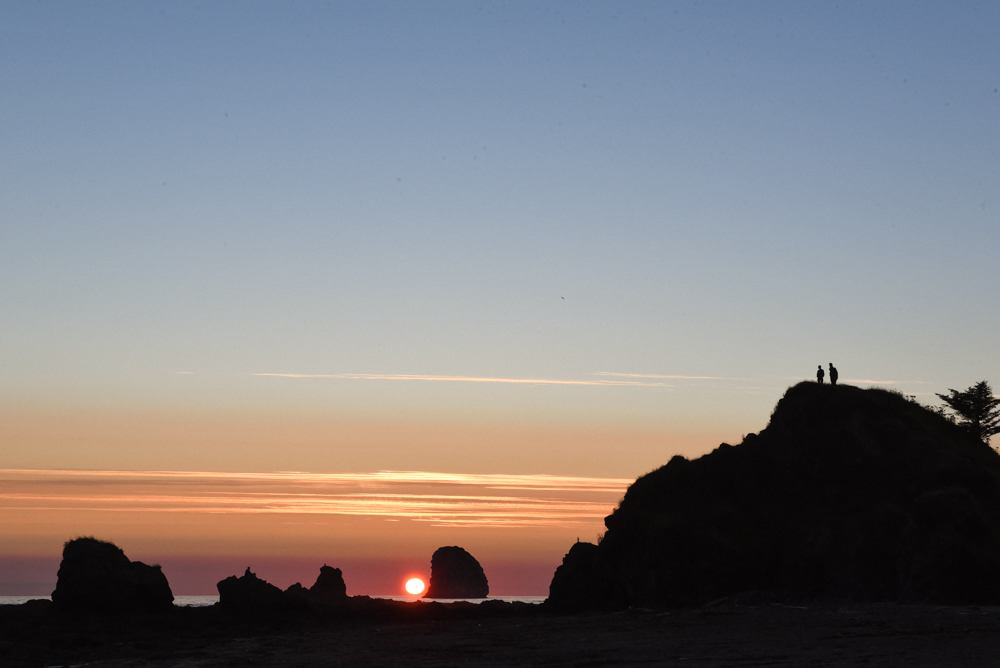Hey there! In July, I hiked the Ozette Loop in Olympic National Park in Washington. Although I completed the loop as an overnight backpacking trip, the Ozette Loop would also make a nice day hike. The nine-ish mile loop starts in a coastal forest environment, forks right and winds its way across boardwalks until it dips slightly to the coast. Walking along the beach is the more challenging section, but only because you’re trudging through sand. Eventually, you reach Sand Point, a gorgeous outcropping with a large rock that you can climb atop of. It’s the perfect spot to watch the sunset and the ease of the return trip makes it possible to hike back during twilight and even as darkness falls if you’re not keen on camping. Over the course of the loop, the elevation change is less than 500 feet and beside the beach, most of the trail is on a wooden boardwalk. It’s nearly impossible to get lost and while you should always take a map, you shouldn’t need to consult it even once.
I found the Ozette Loop to be equal parts easy and exciting. As I mentioned, there’s not much elevation change and much of the trail takes place on a wooden boardwalk through coastal forests. While hiking on a boardwalk can be a bit boring, it gives your brain a chance to focus on your surroundings instead of your next steps. Walking amongst giant hemlock and cedar trees and seeing beautiful ferns and moss dripping with moisture had me thinking about ancient reptiles, sea creatures, and dinosaurs (turns out the first dino bone discovered in Washington happened just a couple years ago).
After about three miles, you’ll shuffle down a short and steep section (there’s a rope to aid in your decent) that spits you out on the sand. At this point, my hiking partner and I took off our shoes and shirts, found an enormous downed tree and had a quick snack and snooze. Then it was time to march on along the beach. Looking out towards the sea stacks we thought about the expanse of the Pacific. Was the trash on the beach from Japan? Some of it seemed so.
I opted to hike the two beautiful miles along the beach in Chacos. I tried bare feet for a few moments, but the sand was a bit too coarse for comfort. There was also a fair amount of sharp debris, kelp piles, driftwood and rocks covered in barnacles underfoot. Depending on the changing tide, there will be a few impassable headlands. You’ll have to scramble up over a big boulder or two (apparently there are ropes to assist, but we didn’t see or use them) or hike into the woods to navigate around them. These areas are evident and I found them to be easy enough to manage with an overnight pack. I thought that navigating around the series of downed trees was more exhausting, mostly because I’m short and those tree trunks are huuuge.
As you make your way around the headlands, be on the lookout for the Wedding Rocks petroglyphs. I’m sure I would have missed them if my friend hadn’t pointed them out to me. They are so amazing we thought that they might be fake, but a quick google search proved us wrong. I had seen petroglyphs in Mesa Verde, Colorado, but these were radically different not only in style (obviously) but also in size and definition. Thinking back, I wish I would have prepared myself for that moment because I would have stayed and enjoyed them longer instead of thinking I was being duped. I had expected to see small paintings, not large rock carvings. The petroglyphs were carved by the ancestors of the Makah tribe using tools made of rock and bone.
Soon enough you’ll reach Sand Point and a whole host of campsites. We wandered around for a good bit trying to find a site that was semi-secluded, which proved to be tough since we rolled in late on a Friday evening. Although we could see other tents from our site, once the sun went down I truly forgot that anyone else was around. There was also the option to camp on the beach, but we liked the sheltered feel of the forest. If you do camp on the beach, know where the high tide line falls or you’ll wake up soaking wet. The next morning, bask in the sun and eat your breakfast on the beach before hiking the 4ish miles back to the trailhead.
Know before you go :
- As always, Leave No Trace.
- No pets, use of weapons, or wheeled devices on the trail.
- Reservations and permits are required for overnight camping between May 1 and September 30 & must be made no more than 48 hours in advance. (The website said 72, but we were told 48 at the station. It may depend on the month)
- Campfires are prohibited between the headland north of Yellow Banks and the headland at Wedding Rocks including Sand Point.
- Only use driftwood for fires. Don’t gather firewood from the forested areas. Use existing fire rings or build fires on the beach to prevent damage to tree roots.
- All food, garbage, and scented items must be stored in a park-approved bear canister. Bear canisters are available to rent when you pick up your permit.
- Max group size of 12 people.
Water & waste :
- There is a creek at Sand Point and Cape Alava, but beware that Cryptosporidium and Giardia are present in coastal streams and rivers. Bring a purification system or boil your water. Iodine is ineffective against cryptosporidium. I didn’t know that until this trip. I’ve been using iodine all my life. I ended up purchasing these chlorine dioxide tablets, which treat both Giardia and Cryptosporidium.
- Pit toilets are available at Sand Point and Cape Alava. Elsewhere you must bury your waste and paper six or more inches deep and seventy steps from water sources and your campsite. LADIES! Always take your used toilet paper with you after you pee. It’s offensive to see it on the ground. I carry a plastic ziplock that I put all used toilet paper in. It’s that easy.
What to pack for a day trip :
If I’m day hiking, sometimes I like to be extravagant. Wine with dinner while watching a sunset, anyone?
- Apply sunscreen + bug spray before you leave
- Water
- Purifying tablets
- Map
- Compass
- Knife
- Snacks
- Lunch or Dinner
- Wine?
- Sunglasses
- Pullover
- Rain jacket
- Chacos
- Camera
- Hammock + straps
- Headlamp
What to pack for an overnight trip :
- Permits
- Backpack
- Tent
- Sleeping Bag (I went in July and this bag was plenty warm)
- Sleeping Pad
- Compass
- Map
- Fire Starter / Lighter
- Hat
- Sunglasses
- Bandana / buff
- Quick Dry Towel
- Beanie
- Underwear x2
- Sports bra
- Socks x2 (Wool/Synthetic)
- Long Sleeve
- Short Sleeve/Tank Top
- Yoga/hiking pants
- Fleece lined leggings
- Shorts
- Rain Jacket
- Fleece
- Puffy
- Gloves
- Hiking Boots
- Chacos
- Toilet Paper
- Trowel
- Hand Sanitizer
- Toothbrush/Paste
- Deodorant
- Face oil
- Chapstick
- Bug Spray
- Sunscreen
- Bear Canister
- Headlamp
- Knife/multi-tool
- Nylon rope
- Hammock + straps
- Jet Boil Stove
- Fuel
- Bowl
- Cup
- Spoon + fork + knife
- Water Bottle/Camel Bak
- Water purification tablets
The food we packed :
We started later in the day after we ate lunch so we packed snacks, dinner, and breakfast for our overnighter. And wine. And weed. Relax, it’s legal in Washington.
- Oatmeal
- Starbucks Via
- Nutty + fruity trail mix (remember to add some fruit to your morning oatmeal)
- Jerky
- Sesame sticks
- Honey stick (for the oatmeal)
- sugar packet (for the oatmeal)
- 90-second rice packets
- a delicious chana masala packet + a saag paneer packet (this isn’t the brand I bought – I couldn’t find it online)
- Chocolate
- Wine in a carton – I’m a big fan.

